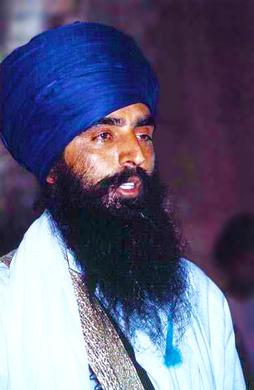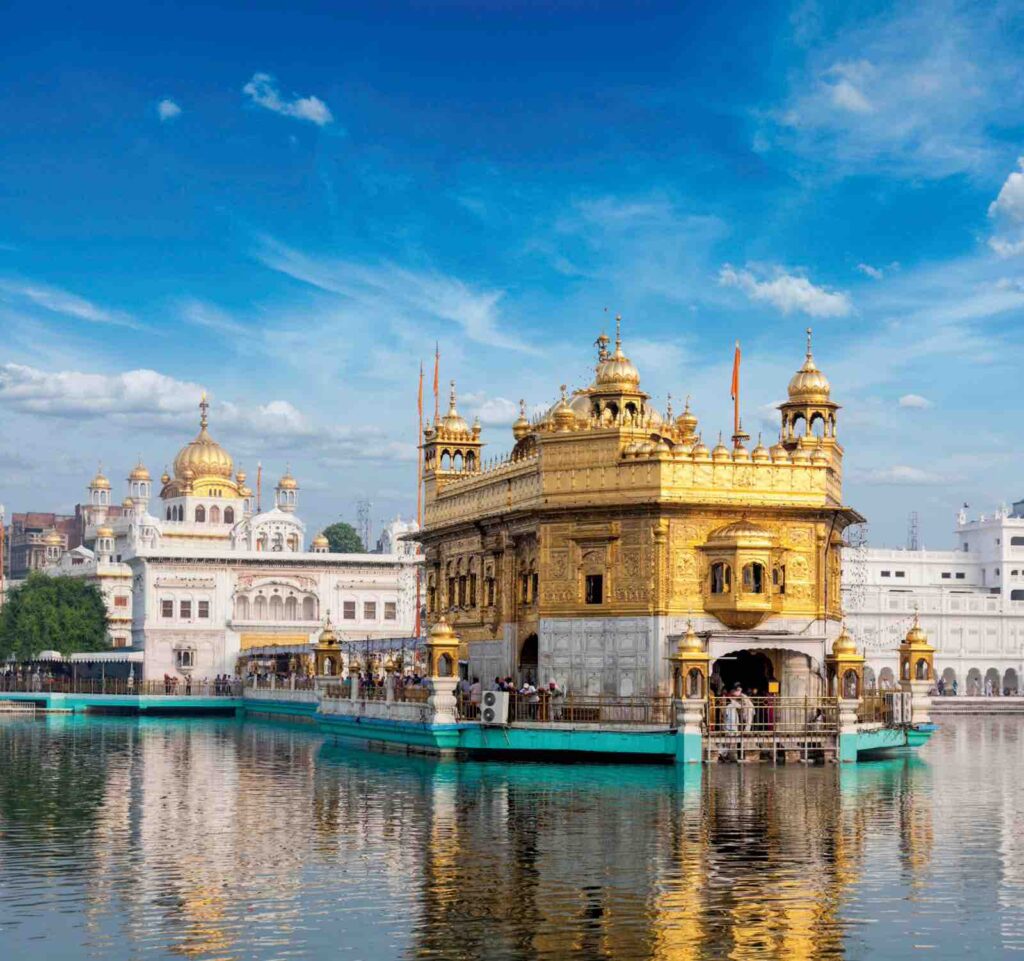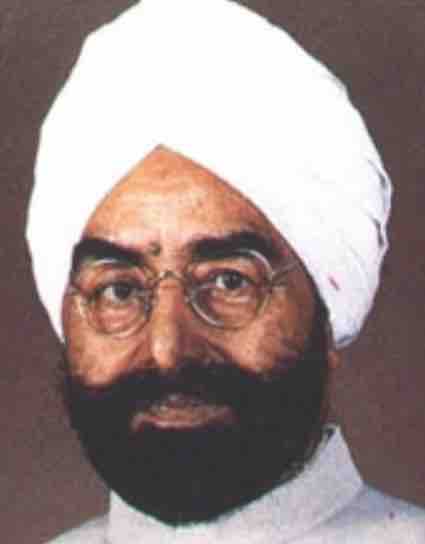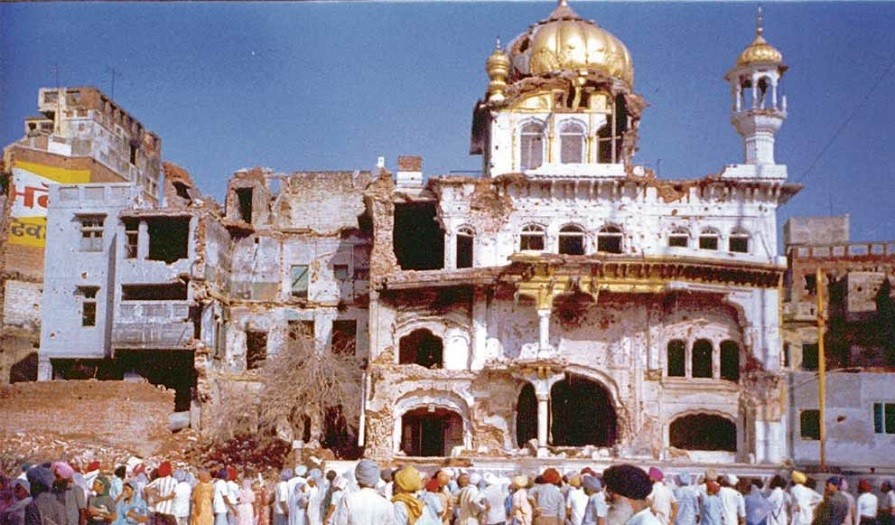Table of Contents
The year 1984 is considered a black spot in the history of India. Unfortunately, the incidences left deep scars that seem fresh to date. The months were marked by deaths, violence, and communal riots. It was the year when the Prime Minister of India, Indira Gandhi was assassinated, Operation Blue Star was launched at the Golden Temple (Harmandir Sahib), Anti-Sikh riots took place in the country’s capital, and Bhopal Gas Tragedy happened.
None of the incidents can be disregarded as they had severe repercussions.
In this article, we will discuss Operation Blue Star, why was it carried out? And, what were its consequences?
Congress’ heavy defeat in elections
The base of Operation Blue Star was said to have been laid in 1977 when the Lok Sabha elections happened. The then Prime Minister of India, Indira Gandhi was heavily criticized for the Emergency she imposed during the years 1975-1977. The outcome of the elections was not a surprise. Indira Gandhi had to face defeat.
In Punjab, Congress faced a heavy defeat and Shiromani Akali Dal, a regional political party, came to power under the leadership of Parkash Singh Badal. In the years to come, Akali Dal played a major role in siding with Jarnail Singh Bhindranwale to get the Anandpur Sahib Resolution (discussed later in the article) passed which Congress criticized.
Punjab Partition
The unrest in Punjab had been brewing since the time of the partition of India in 1947. During the partition, Punjab was split into two parts; the western part was given to Pakistan while the eastern part remained with India. In years to come, Akali Dal led the movement to create a separate state of Punjab with the Sikh majority and Punjabi-speaking community. As a result, in 1966, the Indian state of Punjab was further divided to carve out a new state i.e. Haryana which consisted majorly of Hindi speaking community. The other state retained the name of Punjab with Sikhs as the majority.
The Akalis lost the 1980 elections and Indira Gandhi’s Congress (I) came back in power. The Akalis, as part of the Anandpur Sahib Resolution, staked claim for Chandigarh to be the capital of Punjab and also demanded that a major share of the waters of Ravi and Beas should be given to Punjab. In the years to come, the Anandpur Sahib Resolution was one of the key pointers to the growing destabilization in Punjab.
Jarnail Singh Bhindranwale
The popularity of the Akali Dal when they were in power was not good for Indira Gandhi’s Congress. They needed a figure who could stand face to face against Akali Dal’s government and turn the tide in Congress’s favor. Jarnail Singh Bhindranwale was that man.

Courtesy – Wikipedia
Bhindranwale’s Philosophy
Bhindranwale was the leader of the orthodox Sikh religious institution Damdami Taksal during the period. Giani Zail Singh and Sanjay Gandhi were impressed by the fearless attitude of Bhindranwale and decided to back him to be the face of Congress in Punjab.
Bhindranwale strongly opposed the Nirankari movement due to its principles.
Nirankari movement considered that a living person can take the position of Guru in Sikhism. As per orthodox Sikhs, they followed the path of Guru Gobind Singh, the 10th Guru in Sikhism. Guru Gobind Singh had declared that there won’t be a living Guru after him and that Guru Granth Sahib will be considered the Guru of Sikhs till eternity.
Bhindranwale came into the spotlight in 1978 after the clash between orthodox Sikhs and Nirankari followers. He strongly opposed the Nirankari convention that was to be held in Amritsar. Bhindranwale delivered a sermon that stated that he would not allow the convention to happen and that he would cut the Nirankari followers to pieces.
Bhindranwale had the support of Fauja Singh of the Akhand Kirtani Jatha in this showdown. As part of the clash, apart from Fauja Singh, sixteen other people lost their lives.
In 1980, Gurbachan Singh, the head of the Nirankari movement was murdered. Bhindranwale, along with twenty other associates, was accused of the murder. Bhindranwale took refuge in the Golden Temple to escape the arrest as he knew that the authorities would not pursue him inside the holy temple.
Later, Ranjit Singh, a member of Akhand Kirtani Jatha, surrendered and took responsibility for killing Gurbachan Singh.
Also, Giani Zail Singh, the then Union Home Minister, in his address to the Parliament stated that Bhindranwale was not involved in the murder of Gurbachan Singh.
Census of 1981 and killing of Lala Jagat Narain
In 1981, a country-wide census happened. Lala Jagat Narain, a journalist in Punjab Kesari, urged the Hindus in Punjab to state Hindi as their mother tongue rather than Punjabi. This did not go down well with Bhindranwale who strongly opposed the views of Lala Jagat Narain. Narain also wrote many articles against Bhindranwale and his way of working which fueled Bhindranwale further.
Narain was murdered on 9 September 1981. Bhindranwale was named the accused in the murder though he denied the accusation. On 20th September 1981, Bhindranwale surrendered himself to the police.
As a response, incidents of violence were reported in various parts of India. Ultimately, Bhindranwale was released on 20th October 1981.
Anandpur Sahib Resolution
Bhindranwale was a strong supporter of the Anandpur Sahib Resolution that was drafted by the Shiromani Akali Dal. The following were some of the key points of the resolution:
- Transfer of Punjabi-speaking areas to Punjab.
- Restricting the Central Government power in Punjab.
- Protection of Sikh minorities out of Punjab.
- Reservation for Sikhs in the army.
- More control of the river waters.
- Chandigarh is to be given to Punjab.
- Promotion of Punjabi language.
The Anandpur Sahib Resolution was adopted on 16-17 October 1973. Bhindranwale along with Akali Dal wanted to get Anandpur Sahib Resolution passed but it was opposed by Prime Minister Indira Gandhi who regarded the resolution as a document of secession.
The rejection added fuel and Bhindranwale initiated the demand for a separate nation for the Sikhs i.e. Khalistan. He started promoting the Khalistan movement and got support from NRIs in the United States, Canada, and other countries.
Harchand Singh Longwal, the then leader of Akali Dal made it clear that Anandpur Sahib Resolution did not talk about secession from India, nor it was part of their agenda.
Nevertheless, there was a growing fear within the government relating to Khalistan. Indira Gandhi stationed troops in Punjab to tackle any opposition. Bhindranwale’s arrest was inevitable.
Bhindranwale’s refuge in Guru Nanak Niwas
To escape the arrest, Harchand Singh Longwal invited Bhindranwale to take refuge in Guru Nanak Niwas in the Golden Temple complex. In July 1982, Bhindranwale accepted the offer and took shelter in Guru Nanak Niwas with around 200 armed followers. Bhindranwale slowly took control of the temple and made Harmandir Sahib the headquarters of his operations.

Courtesy – Britannica
On 23rd April 1983, Punjab Police DIG A.S. Atwal was murdered on the stairs of Golden Temple when he was about to leave after the prayer. No one dared to clear his body including the police. It was only after the CM of Punjab telephoned Bhindranwale that the body of the DIG was removed from the premises. Based on the situation in Punjab, it was now established that militants had taken over various Gurdwaras in Punjab and were using them as a haven and for terror activities. Congress was still reluctant to take any action as the siege on Gurdwaras could have hurt Sikh sentiments.
The relationship between the Hindus and the Sikhs had become fragile because of the differences in language and ethnicity. Political games were being played in the name of the community. The situation had become out of control because of the anti-social elements especially the followers of Bhindranwale.
In October 1983, President’s rule was imposed in Punjab after six Hindu passengers in a bus were reportedly killed by a few Sikhs. The response was the killing of 8 Sikhs in Haryana and setting a Gurdwara on fire. As days passed, the atmosphere in Punjab became more tense.
Akal Takht
With violence on the rise in Punjab, the probability of Bhindranwale’s arrest increased. He shifted to Akal Takht from Guru Nanak Niwas in December 1983 and led his operations from there. The idea was clear. The police and military would not breach the walls of Akal Takht as it was a sacred place for the Sikhs.
Akal Takht is considered to be one of the seats of power of the Sikhs located in the premises of Golden Temple in Amritsar, Punjab.
As Akal Takht holds great importance for Sikhs, Bhindranwale had to convince the SGPC (Shiromani Gurdwara Parbhandak Committee) chief Gurcharan Singh Tohra to let him operate from Akal Takht. Tohra later convinced the head priest of Golden Temple to allow Bhindranwale to stay on the 1st floor of Akal Takht. Bhindranwale delivered speeches and orders from Akal Takht. He also gave interviews to the media from his new headquarters and warned the government if it acted against him.
Operation Sundown and negotiations
The Indian Intelligence agency RAW came up with a plan to capture Bhindranwale from the Golden Temple. The operation was code-named Operation Sundown. The operation though never materialized as it was rejected by Indira Gandhi citing heavy civilian casualties.
A team from the government was sent to negotiate with Bhindranwale, but the talks were futile. Bhindranwale was adamant and unwilling to surrender. He threatened violence if an attempt was made for his arrest. The government negotiated with Akali Dal for Bhindranwale’s arrest, but there was no conclusion.
Rise in Militancy
Terror operations were on the rise in Punjab. Whoever spoke against Bhindranwale was eliminated.
The media people were killed, Hindus were targeted, banks were looted, policemen were attacked, bombings took place, and there were several incidents of arson. As per the records, over 400 people were killed and around 1000 were injured in the militant attacks.
Bhindranwale wanted to start a civil war between the Hindus and the Sikhs and drive Hindus out of Punjab. The violence reached its peak in the state and a military operation was the only solution left to drive the militants out of the Golden Temple.
Demands for Khalistan
Under the leadership of Bhindranwale, the demand for a new state “Khalistan” for the Sikhs gained momentum. An atmosphere was created where the Hindus were leaving Punjab and Sikhs from the other states were moving into Punjab. A new currency was also introduced in the name of the new country.
Preparations before Operation Blue Star
Much before Indira Gandhi decided to launch Operation Blue Star, Bhindranwale had started the activity of fortifying the Golden Temple. A large number of sophisticated weapons were smuggled into the temple. It is said that the authorities knew about the weapons but no action was taken.
New walls were built and sandbags were deployed for cover. Holes were dug into the walls to aid the gunmen. Secret passages were created for hiding purposes. The Golden Temple compound, other buildings, and Akal Takht had become a fortress.
An ex-army official, Major General Shabeg Singh trained the militants and also helped them strategically to counter any army operation. Any offensive by the army was not easy as everything was properly planned by the militants.
The food and the essential items were also stocked, enough to last for a month.
Operation Blue Star
The decision of military operation was taken in May 1984. Indira Gandhi did not disclose the operation details to President Giani Zail Singh and the relationship between the two deteriorated. Indira Gandhi supported Giani Zail Singh to be the President of India so that the Punjab situation becomes normal. The attempt was futile.

Courtesy – Wikipedia
The final proposal that was put before Akali Dal and Bhindranwale concerning Anandpur Sahib Resolution was accepted by the Akalis but not by Bhindranwale. He was adamant about Khalistan and preached violence until his demands were met. But, Indira Gandhi was against any demands of the militants.
On 2nd June 1984, Indira Gandhi gave a speech to the nation and described the crisis in Punjab. She made it clear that the situation had gone out of control and that a military operation was the only possible route to end the violence.
On 31st May 1984, Lt. Gen. Kuldip Singh Brar of the Indian Army was briefed about the situation and was asked to head Operation Blue Star and remove the militants from the Golden Temple. The biggest threat to the Indian Army was the presence of Major General Shabeg Singh on Bhindranwale’s side. He was a veteran and knew how to carry out military operations.
Operation Blue Star sub-operations
The operation was divided into three sub-operations:
- Operation Metal – It was aimed to remove Bhindranwale and other militants from the Golden Temple.
- Operation Shop – This operation was aimed at capturing militants from across the Punjab countryside.
- Operation Woodrose – The whole of Punjab, especially the border areas, were to be sanitized to eliminate any militants.
Operation Bluestar: Chain of Events
Start of the offensive
June 1, 1984
The Indian Army fired at buildings within the Golden Temple complex to understand the hideouts of the militants. Many eyewitnesses rejected this theory and stated that there was unprovoked firing from the Indian army to kill people. The main shrine of the Golden Temple or Darbar Sahib was disfigured with 34 bullet marks. Also, 8-10 pilgrims lost their lives in the firing.
June 2, 1984
By 2nd June, the Indian army took over the operations from the paramilitary forces. Many divisions of the military were deployed in the villages across Punjab. The media was censored, the electricity and telephone lines were cut off, the trains were canceled, the road and air services were suspended, and the movement of people was restricted in and around Amritsar. Though people were still allowed to enter the Golden Temple complex.
June 3, 1984
The curfew was lifted for some time on 3rd June 1984. The day coincided with the day of martyrdom of the fifth Guru Arjan Dev. Thousands of people gathered inside the temple to celebrate the day. In the late evening, the curfew was re-imposed and the exits and entries of the temple were completely sealed. The people gathered inside the temple were not allowed to leave the premises nor any person was allowed to enter the complex.
Lt. Gen. Kuldip Singh Brar made it clear to his officers that if anyone wanted to back out from the operation, no action will be taken against him. None of the officers opted out.
Warning by the Army
June 4, 1984
The Army broadcasted warning messages to ask the civilians to leave the temple. However, as per the ruling of the Amritsar sessions court, no warning was given by the army.
The army attacked Ramgariha Bunga, the historic water tank inside the Golden Temple, and other buildings with Ordnance QF 25-pounder.
Meanwhile, Gurcharan Singh Tohra, SGPC chief, was appointed to negotiate with Bhindranwale. The attempt as predicted turned out to be futile once again. The army continued with its operation.
June 5, 1984
In the early morning of 5th June, the army resumed its assault with the motive of entering the temple premises. The 9th division launched an attack on Akal Takht but was unable to secure the building due to heavy firing and strategic planning by the militants.
CRPF and BSF took control of the Hotel Temple View and Brahm Boota Akhara by 22:00 hrs on the same day.
Later in the evening, the army took control of Darshan Deori from where they launched an attack on Akal Takht. Due to fortification, it became difficult for the army to breach the walls of Akal Takht. The militants had occupied strategic points around the complex which made it difficult for the army to penetrate the targets. The delay caused a huge number of civilian and army casualties.
June 6, 1984
The army introduced tanks to attack Akal Takht and capture Bhindranwale and other militants. A fierce battle ensued between the army and the militants.
Taking Control
June 7, 1984
By June 7, the army entered Akal Takht and took control of it. The dead bodies of Bhindranwale and Shabeg Singh were recovered from the Akal Takht. The army was now in full control of the Golden Temple complex.

Courtesy – The World Sikh News
By 10th June 1984, the complex was completely sanitized and all the militants were eliminated. Operation Blue Star was finally over.
Casualties as part of Operation Blue Star
As per the official reports, around 493 civilians and militants were killed in the operation. Around 83 Indian army soldiers were killed and 236 were injured.
Other reports stated that almost 700 soldiers were killed in the attack. This number was disclosed by Rajiv Gandhi in September 1984.
Repercussions of Operation Blue Star
The operation led to the assassination of Indira Gandhi in October 1984. She was killed by her Sikh bodyguards. The event was succeeded by the Anti-Sikh riots between November 1-3, 1984 in the country’s capital, Delhi, and other cities in Northern India.
The incident where Air India flight 182 was hijacked and bombed in 1985 was considered to be a consequence of Operation Blue Star.
The Chief of Army Staff during the time of Operation Blue Star, General Arun Shridhar Vaidya was assassinated by two Sikhs in 1986.
In 1986, some Sikh militants occupied the premises of Golden Temple. Operation Black Thunder was initiated by the paramilitary forces who later were able to take control of the premises.
CURATED & WRITTEN BY
AYUSH PANDYA
(AUTHOR – THE UNPRECEDENTED CULT)